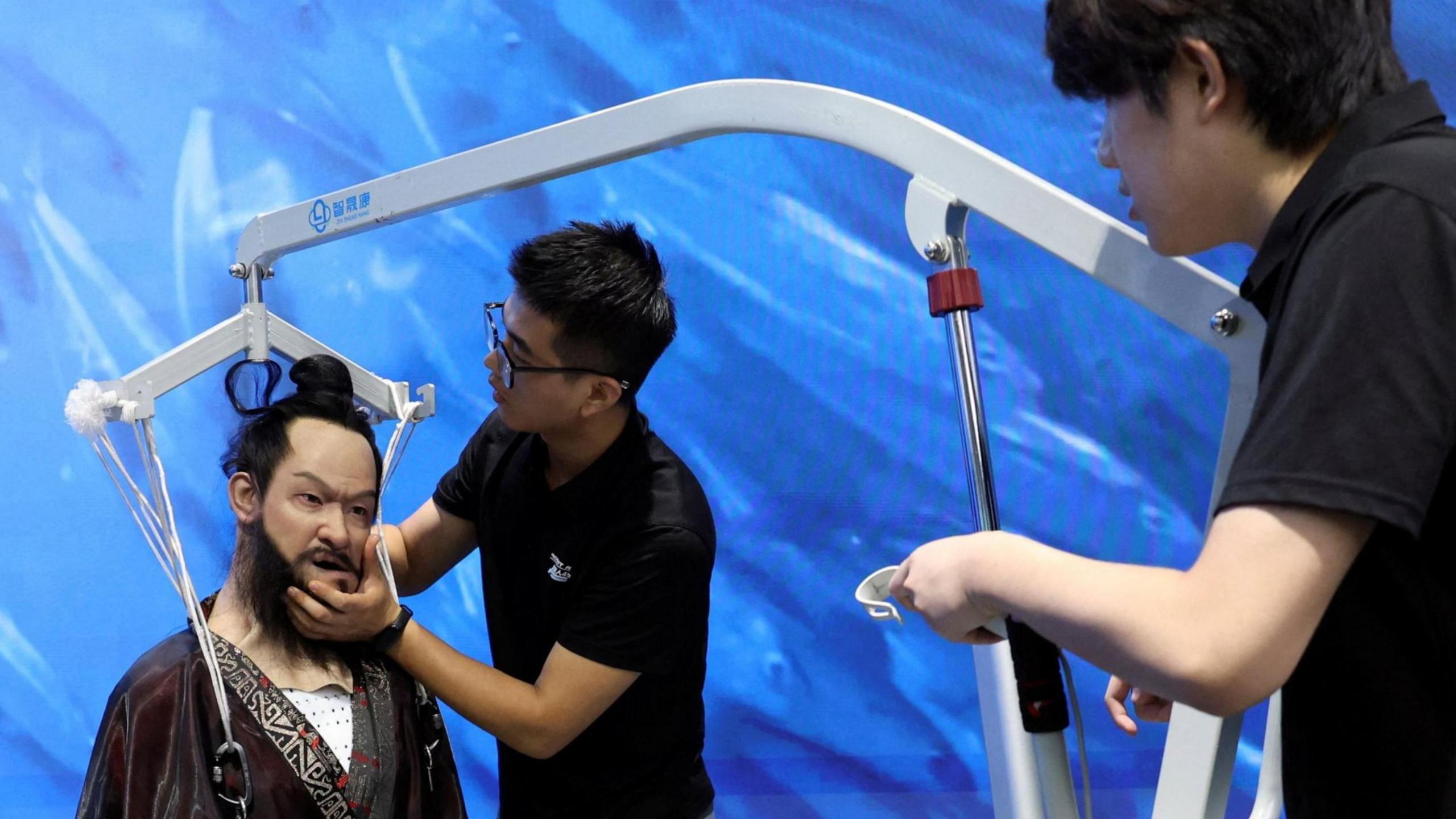In China, an innovative retail outlet has started providing advanced humanoid robots straight to customers, representing a major advancement in the technology of personal robotics. This new shop features incredibly realistic machines designed to carry out a variety of household and social tasks, turning science fiction ideas into everyday life.
The robots embody the newest accomplishments in artificial intelligence, mechanical design, and material science. These machines, about the size of a human, display lifelike facial expressions, smooth motions, and conversational speech patterns that make the distinction between machine and human interaction less clear. Visitors can watch demonstrations of the robots executing domestic duties, offering companionship, and participating in simple dialogues.
Industry analysts note this commercial launch signals a major advancement in robotics accessibility. Previous generations of humanoid robots were typically limited to research institutions, manufacturing facilities, or specialized service roles. The availability of such sophisticated models directly to private buyers suggests the technology has reached a new threshold of reliability and affordability.
The robots integrate a variety of state-of-the-art technologies. Modern actuators facilitate smooth, human-like movements, and the machine learning algorithms permit personalized interactions that adjust according to user preferences over time. High-definition cameras and advanced sensors offer environmental perception, allowing the robots to move through homes and react suitably to different scenarios.
Pricing frameworks differ greatly depending on features, with entry-level models beginning at prices similar to a luxury car, while top-tier versions can cost as much as exclusive sports cars. The shop provides financing plans and personalization bundles, enabling customers to choose particular abilities and temperament characteristics for their robotic partners.
Potential uses showcased at the facility cover support for elderly people, tutoring children, household tasks, and protecting homes. Certain models are designed for specific activities, such as meal preparation or tidying up, whereas others function as versatile helpers. The establishment highlights that every robot is equipped with privacy protections and is capable of working offline for tasks that require discretion.
This launch into the market comes after several years of progress in China’s robotics industry, which has thrived due to significant governmental backing and private funding. The nation’s production abilities and increasing knowledge in artificial intelligence have combined to create these highly sophisticated machines. Analysts in the field indicate that this commercial strategy seeks to speed up practical evaluations and the honing of humanoid robotics via broad consumer usage.
Ethical considerations surrounding human-robot relationships and potential job displacement have emerged alongside the technological achievements. The store addresses some concerns by emphasizing the robots’ role as complements to human labor rather than replacements, particularly for tasks that are dangerous, repetitive, or in shortage of workers.
International reaction to the development has been mixed, with some experts praising the technological achievement while others caution about potential social implications. Privacy advocates have questioned data collection practices, though the manufacturer claims all personal information remains securely stored and encrypted within the robot unless explicitly shared by the owner.
The retail idea features extensive training sessions for purchasers, guaranteeing the correct installation and upkeep of the advanced equipment. Service offerings encompass routine software updates, hardware servicing, and technical assistance—acknowledging that such sophisticated technology demands continuous attention akin to luxury cars.
As the store launches its activities, technology lovers and intrigued shoppers are gathering to engage with the machines. Initial feedback from customers shows a notable fascination with models designed to offer companionship to seniors and support parents with child-rearing duties. The financial success of this business might influence the speed at which humanoid robots evolve from being novelty gadgets to everyday home devices.
Este avance marca un punto de inflexión en la robótica de consumo, quizás anunciando una nueva era en la que seres artificiales avanzados formen parte de la vida cotidiana. A medida que la tecnología sigue progresando, las futuras versiones prometen capacidades aún mayores, generando preguntas profundas sobre la relación en evolución entre humanos y máquinas en entornos domésticos.
The launch of the shop aligns with the increasing worldwide fascination with personal robotics, indicating that China might be establishing itself as a front-runner in this up-and-coming market. The extent to which these realistic machines will gain broad acceptance or stay as niche items hinges on various elements, such as cost reductions, advancements in functionality, and cultural acceptance—all of which will become more evident as additional units make their way into households in the upcoming months.
For now, the retail establishment stands as a tangible manifestation of rapid progress in robotics, offering the public an unprecedented opportunity to bring cutting-edge artificial intelligence into their personal lives. The long-term societal impact of this technology remains to be seen, but its commercial availability marks a significant step toward the robot-populated future once imagined only in speculative fiction.

